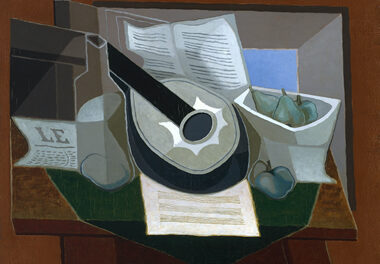The Brevard Philharmonic, like most arts organizations, is feeling the pinch. The orchestra doesn’t look as full as it used to, and there are probably many more compromises made of which I am unaware. And yet, this organization stays on the move with wonderful and ambitious projects. They maintain a season of five concerts, utilizing area soloists and invited guest artists. They have maintained educational initiatives of outreach to Transylvania county public school children through Music in the Schools and a youth string program. With a consortium of other orchestras — Wilmington Symphony, Western Piedmont Symphony, University of South Carolina Symphony, and the Dayton Philharmonic Orchestra — they have commissioned an important new work, Meira Warshauer’s Tekeeyah (a call), the world’s first concerto for trombone/shofar (ram’s horn) and orchestra, and performed its regional premiere featuring Israeli trombonist Haim Avitsur, the guest soloist.
This concert, conducted by Donald Portnoy and sponsored by the Brevard Jewish Community, first revisited old ground with Brahms’s “Tragic” Overture Op. 81 from 1880. After two massive chords, the full orchestra initiates a sweeping, lyrical theme, though here sounding sadly underpowered in the string sections. There were other mishaps as well — some sloppy work in the development section where labored-over motives didn’t connect to the melodic trajectory, and a quiet, middle section that bogged down. This is a stirring work of great pathos, but the performance failed to plumb its emotional depth and drew only tepid applause.
With Tekeeyah the orchestra managed a course correction and gave the piece their all. Warshauer (b.1949), a resident of Columbia, SC, is the Nancy A. Smith Distinguished Visitor in Residence at Coastal Carolina University. She has received numerous fellowships and commissions, and her work has been performed both in the US and abroad. Her compositions focus primarily on spiritual themes, as they pertain to Jewish subjects or the natural world. Tekeeyah was begun at the MacDowell Colony in 2008, and further developed in collaboration with Avitsur, whose shofar is a spectacular curling antelope horn four feet in length.
The piece unfolds as both a single-movement concerto and programmatic wake-up call to humanity. Warschauer: “I believe our time calls for an awakening to our true essence as human beings. Our planet needs us, and we need each other, to care for and heal our suffering world. The shofar…, with its natural power and centuries of service in calling Jews to awaken, can be an important instrument in this collective awakening and renewal of purpose…
The shofar calls us.
It calls us before we are born.
It calls us to enter the world.
It is our touchstone as we move through life’s challenges.
It helps break through walls we construct around our essence.
Those protective walls may be the very ones that keep us from our true knowing.
The shofar calls us to return.
With energy released from the effort of hiding, we dance our truth.”
The work began with the soft, eerie sounds of string glissandi and air blown through the brass and winds, including the shofar, sounds the composer likens to “the whisperings of God from above.” Out of these depths a short melody emerges in the violins and is imitated in clarinet, horn and trumpet. Finally a shofar tone sounds quietly (“the small voice within”) against the orchestral backdrop, and more quiet tones follow, frequently two separated by a glissando. As the piece progresses, one hears the shofar music of Jewish ritual embedded in the fabric of the work — on Rosh Hashanah a series of a single long tone, then three shorter tones, and then at least nine staccato tones, ending with a very long tone (this last tone is sounded again at the conclusion of Yom Kippur). Shofar and trombone are played alternately, many of the trombone passages in the middle section sounding more like an obbligato than the flamboyant passagework of a foregrounded soloist. In the final section, though, the sound of the shofar is front and center, sounding repeated loud blasts in overlapping statements with the horns. The piece is successful, not because it is gimmicky, but because it is extremely well-written. Seldom have I been so moved on the first hearing of a new work.
This was a hard act to follow, but after intermission the program concluded with a fine reading of Borodin’s Symphony No. 2 in B minor, composed between 1868 and 1876. The orchestral playing was incisive, focused and finely shaded in movement one. Movement two, a scherzo with recurring passages requiring tricky double tonguing in the brass, gave the veterans in those sections no problems. The third movement Andante provided the first real melody in the Symphony, beautifully rendered in solo horn, then clarinet. The Finale was an exuberant movement in B major (unlike the B minor of the first movement) that proceeded in gleeful syncopated blocks of sound.











